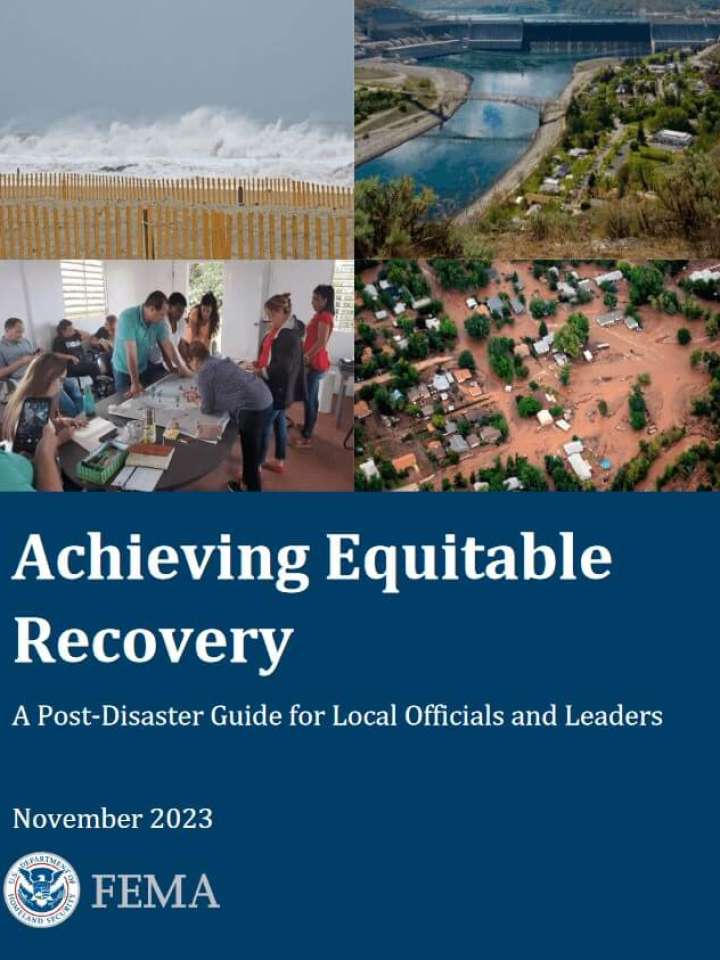Achieving equitable recovery a post-disaster guide for local officials and leaders
The Achieving Equitable Recovery: A Post-Disaster Guide for Local Officials and Leaders to help communities build relationships, hold conversations about equity, and prioritize post-disaster recovery projects and resources that meet the needs of all groups in the community. The Guide can also help communities enhance planning for previously unaffected populations who are now at risk of adverse outcomes. It outlines eight equity goals and provides resources and examples to inform an equitable recovery process. In addition to the eight equity goals, an overarching goal of this document is to provide resources to state, local, tribal, and territorial (SLTT) leaders about legal, policy, and cultural aspects of engaging with and providing resources to Tribal Nations.
The Guide helps community leaders identify and address barriers historically found throughout the disaster recovery process by providing advice, checklists, toolkits, case studies, and community examples on how to incorporate equity through the recovery management process and how to achieve equitable outcomes. Spme communities have experienced substantial and pervasive historical inequities, which can pose challenges to building trust and establishing relationships. Consequently, the whole community must be engaged in recovery initiatives. When disasters strike, communities can lose everything. From homes and critical infrastructure systems to cultural identity, storms can dismantle both physical and social structures. However, if restored thoughtfully, resiliently, and equitably, disasters can provide opportunities to rebuild long-lasting inclusivity in all areas of society.
